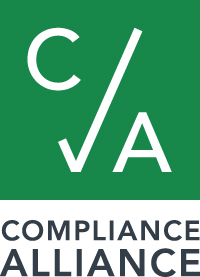|
Question:
We send disclosures electronically and can be notified when the borrower has not accessed them by the Loan Estimate (LE) due date. Are we required to mail the disclosures on that day if the borrower hasn’t accessed the electronic docs? They are telling us they are having a problem once we are past the LE due date so we are mailing them then but it is past the due date. If our system logs that we sent it by the due date and the borrower had e-consented, are we okay? Answer: The customer is considered to have received the LE three business days after the bank sends it, even if the customer has not opened it. There is not a regulatory requirement to then send the disclosures in paper form as well. However, doing so may be required under the bank's internal policy, or an investor's guidelines (if applicable). 2. Electronic delivery. The three-business-day period provided in § 1026.19(e)(1)(iv) applies to methods of electronic delivery, such as email. For example, if a creditor sends the disclosures required under § 1026.19(e) via email on Monday, pursuant to § 1026.19(e)(1)(iv) the consumer is considered to have received the disclosures on Thursday, three business days later. https://www.consumerfinance.gov/policy-compliance/rulemaking/regulations/1026/19/#19-e-1-iv-Interp-2 Question:
Is an "assumed" loan HMDA reportable? There was only one borrower when the loan was originated (not this year) and the loan was reported in that year. The Bank has now allowed another borrower to assume the note from the original borrower. Answer: Yes, it would be when the bank enters into a written agreement accepting a new borrower in place of an existing borrower, even if the bank does not create a new obligation. i. Assumptions. For purposes of Regulation C, an assumption is a transaction in which an institution enters into a written agreement accepting a new borrower in place of an existing borrower as the obligor on an existing debt obligation. For purposes of Regulation C, assumptions include successor-in-interest transactions, in which an individual succeeds the prior owner as the property owner and then assumes the existing debt secured by the property. Under § 1003.2(d), assumptions are extensions of credit even if the new borrower merely assumes the existing debt obligation and no new debt obligation is created. See also comment 2(j)-5. Comment 2 to §1003.2(d)(2)(i): https://www.consumerfinance.gov/policy-compliance/rulemaking/regulations/1003/Interp-2/#2-d-Interp-2-i First, the HMDA Rule maintains Regulation C’s coverage of loan assumptions, even if no new debt obligation is created. A loan assumption is a transaction in which a Financial Institution enters into a written agreement accepting a new borrower in place of an existing borrower as the obligor on an existing debt obligation. The HMDA Rule clarifies that, under Regulation C, assumptions include successor-in-interest transactions in which an individual succeeds the prior owner as the property owner and then assumes the existing debt secured by the property. Assumptions are extensions of credit under the HMDA Rule even if the new borrower merely assumes the existing debt obligation and no new debt obligation is created. Comment 2(d)-2.i. HMDA Small Entity Compliance Guide, p. 32: https://files.consumerfinance.gov/f/documents/cfpb_2018-hmda_small-entity-compliance-guide_stickered.pdf Question:
Can you clarify all of the documents that the Board of Directors is required to review prior to approving the BSA/AML Policy? Does the BOD need to review the Policy, Risk Assessment and Procedures as a total program review? Answer: Because procedures and policies are components of the BSA/AML compliance program, conservatively, the Board of Directors should be approving both of them. Additionally, even though it is not explicitly required, because of how broad the requirement is and in the spirit of keeping the board informed, we have members who also obtain board approval for the risk assessment component. (b) Establishment of BSA compliance program—(1) Program requirement. Each bank shall develop and provide for the continued administration of a program reasonably designed to ensure and monitor compliance with the recordkeeping and reporting requirements set forth in subchapter II of chapter 53 of title 31, United States Code, the Bank Secrecy Act, and the implementing regulations promulgated thereunder by the Department of the Treasury at 31 CFR part 103. The compliance program shall be reduced to writing, approved by the board of directors, and noted in the minutes. § 208.63: https://www.ecfr.gov/cgi-bin/text-idx?c=ecfr&sid=512f235ab20bd5823c2a3d1bfdb1c168&rgn=div8&view=text&node=12:2.0.1.1.9.6.3.4&idno=12 The BSA/AML compliance program must be written, approved by the board of directors, and noted in the board minutes. A bank must have a BSA/AML compliance program commensurate with its respective BSA/AML risk profile. Refer to the core overview section, "BSA/AML Risk Assessment," page 18, for additional guidance on developing a BSA/AML risk assessment. Refer to Appendix I (“Risk Assessment Link to the BSA/AML Compliance Program") for a chart depicting the risk assessment’s link to the BSA/AML compliance program. Furthermore, the BSA/AML compliance program must be fully implemented and reasonably designed to meet the BSA requirements.32 Policy statements alone are not sufficient; practices must coincide with the bank’s written policies, procedures, and processes. The BSA/AML compliance program must provide for the following minimum requirements: · A system of internal controls to ensure ongoing compliance. · Independent testing of BSA/AML compliance. · Designate an individual or individuals responsible for managing BSA compliance (BSA compliance officer). · Training for appropriate personnel. BSA/AML Manual: https://www.compliancealliance.com/find-a-tool/tool/regulatory-policy-and-training-requirements |
Archives
March 2020
CategoriesCompliance Alliance offers a comprehensive suite of compliance management solutions.
To learn how to put them to work for your bank, call (888) 353-3933 or email info@compliancealliance.com. |


 RSS Feed
RSS Feed
